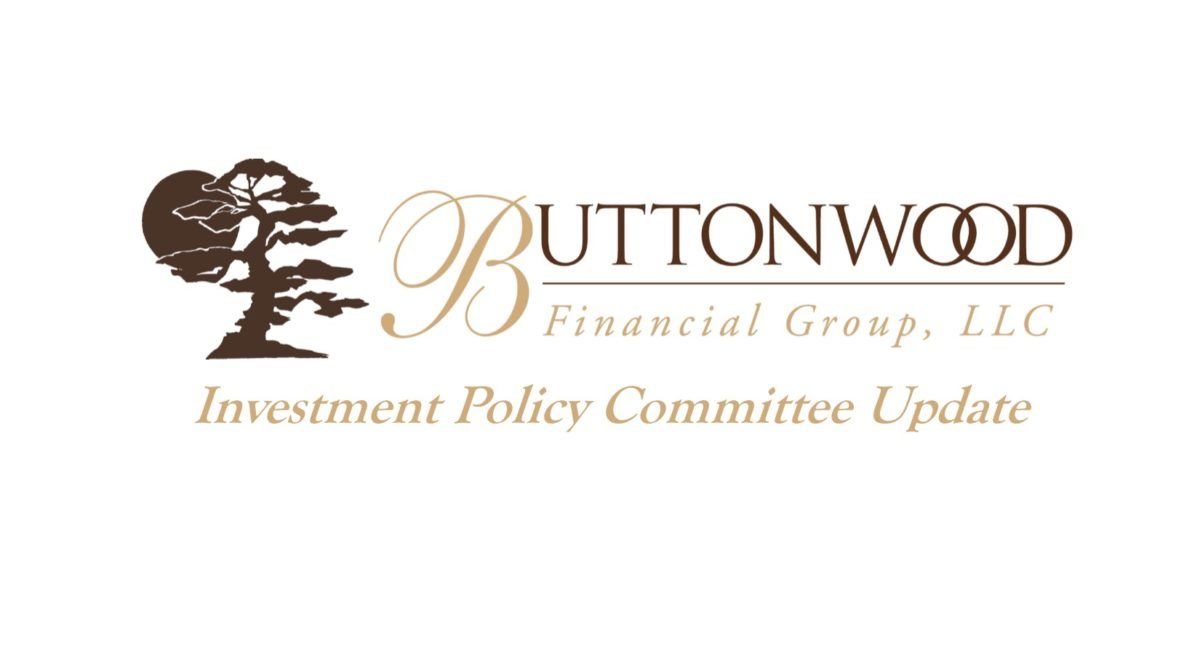Investment Policy Committee Update - January 2023
After a year of defensiveness to protect against losses from both stock and bond markets, we believe 2023 will require a different strategy. Given what we saw as a later stage market environment, in 2022 we proactively reduced risk – lowering equity exposure and maintaining portfolio inflation hedges like commodities and energy. As we move into 2023, we're now shifting our focus to a setting where inflation, the dollar, and longer-term interest rates look like they have peaked. For our Q1 2023 rebalance the objective was to recalibrate investments to better align with these shifts. In summary, we are taking our first step toward additional risk.
While not a big step, we’ve adjusted portfolios to move back to a slight overweight for equities. Even though the risk of recession is not zero, in our view the broad market positioning and sentiment have been excessively bearish, introducing greater potential for upside surprise. After nearly 18 months from initiating these positions, we have completely removed inflation hedges (commodities, energy, and TIPS exposure), given our belief that inflation is easing. Regionally, we’ve reduced our U.S. equity exposure, adding to both Developed Markets (DM) and Emerging Markets (EM) equities, on attractive valuations, resilient earnings, and the potential for outperformance in a disinflationary environment. We are focused on adding to exposures that do well when rates and the dollar are falling, like DM growth, broad EM equities and EM debt.
On the fixed income side, we continue the themes from Q4 2022 by adding to credit and duration while looking to tap into attractive fixed income sectors; namely US Investment Grade, Mortgage-Backed Securities and Emerging Market Debt. Longer duration treasuries provide a ballast to the other risk-on decisions being made throughout both the stock and bond side of portfolios.
These changes are an important but careful recalibration of the portfolio. The amount of risk we're carrying remains relatively low, but we're reshaping the emphasis of that risk towards what we see as an increased likelihood of an optimistic “soft landing / goldilocks” outcome. This scenario would encompass inflation continuing to decline and Long-Term interest rates in the US falling. These initial 2023 portfolio changes are consistent with that outlook, while remaining relatively conservative in our overall level of risk taking.
Inflation:
Inflation was a dominant story for 2022, and we believe this will continue to be a focus for markets and the Fed into 2023. However, we have started to see inflation slow in the past few months in a meaningful way, which should allow the Fed to pause interest rate hikes sometime in the first half of the year. Headline year-over-year CPI fell from 9.1% in June to 6.5% in December driven by stabilizing energy prices and falling goods inflation. This is despite the services component moving higher, driven by strength in shelter (the single largest component for inflation), which we saw move up by 0.6% Month over Month in November Core CPI. As discussed in our Q4 22 update, shelter inflation is extremely lagged, all our real-time data shows a clear cooling in the housing and rental markets. This will most certainly be a downward force on inflation at least early in the year. Month-over-month CPI services (ex-shelter) has been zero for the past two months and fell to negative in December, which historically has been a good predictor of future inflation. Furthermore, the annualized seasonally adjusted Core PCE, the Fed’s preferred measure of inflation, has averaged just 2.5% in the last 2 months, below even the Fed’s own inflation projections of 3.5% in the SEP (Statement of Economic Projections).
The key takeaways here are that while many market participants focus on the year-over-year data, this is looking in the rearview mirror, and we should be focused on the future path of inflation. Additionally, we see a divergence between what the Fed is publicly expecting versus what is in the data (2.5% over the past 2 months) and could lead to changes in monetary policy in the coming months.
What to watch:
Central Banks have made tremendous progress tightening financial conditions since initiating the new rate cycle early last year. Spiking mortgage rates have dramatically reduced new home sales, investor and CEO confidence has plunged, capital spending is being delayed and savings depleted, and rate sensitive sectors like Technology have given back their Covid era gains. Consensus Wall Street estimates expect flat to negative growth in 2023, with average GDP growth expectations ranging from 0.5% to -0.5%, hardly a severe contraction, but not expansionary. Average estimate of U.S. recession probability from the same group is just over 60%.
How could this be a good thing? Well, we believe much of the bad news has already been priced in. Remember that markets are forward-looking discounting mechanisms that anticipate changes in the real economy, typically 6-12 months ahead of when they appear in economic data. Just as financial markets pulled forward the risks of a 2023 recession into 2022, evidenced by the broad declines in markets we saw last year, history tells us that markets can similarly rebound before a recovery in the real economy.
With inflation decidedly cooling, financial conditions sufficiently tight and much of the bad news already priced in, we see risks skewed asymmetrically to the upside. Should a recession materialize, that is already base case and largely reflected in current asset prices. Should it fail to materialize, risk assets should benefit. Of course, there is always risk of a deep recession – i.e. the downward inflation trend stalls or reverses and Fed slams the brakes – which is why we are cautiously deploying risk while hedging equity risk. Our thoughts are that in 2023 inflation comes down and GDP growth doesn’t spend more than one quarter in negative territory. As such, we are engineering a modest active position designed to capture this scenario while keeping active risk low. With this positioning we can risk up further if and when data arrives confirming these thoughts.
We will continue to provide ongoing updates on our views and investment positioning. Should you have specific questions about our strategy, please let us know and we will make sure to review details at our next meeting. And while we don’t recommend fixating on short term market fluctuations, if you would like to check specific investment performance across all your accounts, our Buttonwood Portal is available 24/7. Or you can contact us, and we will provide reports specific to your questions and financial life.
Thank you for your continued trust and allowing us to coordinate your asset management as part of our Family CFO services!
Recent Buttonwood Articles

Are you ready to explore the benefits of your very own Family CFO?




